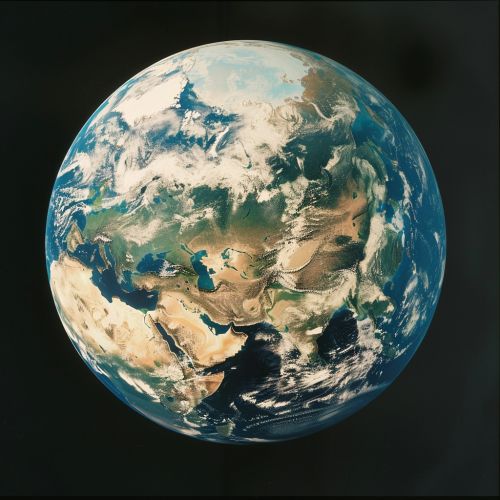Spherical Geometry
Introduction


Spherical geometry is a branch of non-Euclidean geometry that deals with the properties and relations of points, lines, and figures on the surface of a sphere. Unlike Euclidean geometry, which is based on flat surfaces, spherical geometry operates on curved surfaces, leading to unique properties and theorems. This field has significant applications in various disciplines, including astronomy, navigation, and geodesy.
Historical Background
The study of spherical geometry dates back to ancient civilizations. The Greeks, particularly Hipparchus and Ptolemy, made substantial contributions to this field. They used spherical geometry to understand celestial phenomena and develop early models of the cosmos. The Islamic Golden Age also saw advancements in spherical geometry, with scholars like Al-Biruni and Al-Khwarizmi applying it to astronomy and geography.
Basic Concepts
Points and Lines
In spherical geometry, a point is defined as a location on the surface of a sphere. A line, or more precisely a great circle, is the intersection of the sphere with a plane that passes through its center. Great circles are the shortest paths between two points on a sphere, analogous to straight lines in Euclidean geometry.
Angles and Triangles
Angles in spherical geometry are formed by the intersection of two great circles. A spherical triangle is defined by three great circle arcs, and its angles add up to more than 180 degrees, unlike the 180-degree sum in Euclidean triangles. The excess over 180 degrees is known as the spherical excess and is proportional to the area of the triangle.
Spherical Polygons
Spherical polygons are figures on the surface of a sphere bounded by arcs of great circles. The most common spherical polygon is the spherical triangle, but other polygons, such as spherical quadrilaterals and pentagons, also exist. The sum of the interior angles of a spherical polygon exceeds that of its Euclidean counterpart.
Theorems and Properties
Girard's Theorem
Girard's theorem states that the area of a spherical triangle is proportional to its spherical excess. Specifically, the area \( A \) of a spherical triangle with angles \( A \), \( B \), and \( C \) is given by:
\[ A = R^2 (A + B + C - \pi) \]
where \( R \) is the radius of the sphere.
Spherical Law of Sines
The spherical law of sines relates the sides and angles of a spherical triangle. It states that for a spherical triangle with sides \( a \), \( b \), and \( c \) opposite angles \( A \), \( B \), and \( C \) respectively:
\[ \frac{\sin(a)}{\sin(A)} = \frac{\sin(b)}{\sin(B)} = \frac{\sin(c)}{\sin(C)} \]
Spherical Law of Cosines
The spherical law of cosines has two forms: one for sides and one for angles. For sides, it states:
\[ \cos(a) = \cos(b)\cos(c) + \sin(b)\sin(c)\cos(A) \]
For angles, it states:
\[ \cos(A) = -\cos(B)\cos(C) + \sin(B)\sin(C)\cos(a) \]
Applications
Astronomy
Spherical geometry is fundamental in astronomy, particularly in the study of celestial spheres and the positions of stars and planets. It enables astronomers to calculate the apparent motions of celestial bodies and predict astronomical events.
In navigation, spherical geometry is used to determine the shortest path between two points on the Earth's surface, known as the great circle route. This is crucial for air and sea travel, optimizing routes and saving fuel.
Geodesy
Geodesy involves measuring and understanding the Earth's geometric shape, orientation in space, and gravitational field. Spherical geometry helps in modeling the Earth as a sphere or an ellipsoid, facilitating accurate mapping and surveying.
Advanced Topics
Spherical Trigonometry
Spherical trigonometry deals with the relationships between angles and sides in spherical triangles. It extends the principles of plane trigonometry to spherical surfaces, providing tools for solving complex problems in navigation and astronomy.
Higher-Dimensional Spherical Geometry
Higher-dimensional spherical geometry explores the properties of spheres in dimensions greater than three. This field has applications in theoretical physics, particularly in the study of general relativity and string theory.
Spherical Harmonics
Spherical harmonics are special functions defined on the surface of a sphere. They are used in various fields, including quantum mechanics, geophysics, and computer graphics, for solving partial differential equations and modeling complex shapes.
